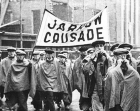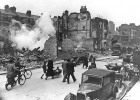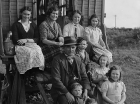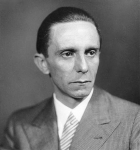Britain since 1930
A popular topic in the past has been Britain since 1930, which usually provides a focus upon World War II. It is possible to retain a study of World War II in Key Stage II provided that the unit of study either links to the locality, or shows how this was a turning point and draws links to knowledge that children have already developed. In this section you will find podcasts, articles and resources to help you plan to teach World War II as a local study or turning point in history.
Sort by:
Date (Newest first) | Title A-Z
Show:
All |
Articles |
Podcasts |
Multipage Articles
-

Fifty years ago we lost the need to know our twelve times tables
ArticleClick to view -

Happy and Glorious: exploring and celebrating the Platinum Jubilee
ArticleClick to view -

How to make a toy museum
ArticleClick to view -

Ideas for assemblies: LGBT History Month
ArticleClick to view -

Ideas for assemblies: significant women in history
ArticleClick to view -

Jarrow Crusade
ArticleClick to view -

Jubilee medals: celebration and creation
ArticleClick to view -

Local significant individuals
Multipage ArticleClick to view -

Magdalen Road
ArticleClick to view -

Muslim soldiers in World War I
ArticleClick to view -

Northamptonshire in a Global Context
ArticleClick to view -

One of my favourite history places: Meldon Viaduct
ArticleClick to view -

One of my favourite history places: Studland Village
ArticleClick to view -

One of my favourite history places: the Italian Chapel in Orkney
ArticleClick to view -

Primary Scheme of Work: Remembrance
ArticleClick to view -

Promoting Gypsy, Roma and Traveller heritage in your primary history curriculum
ArticleClick to view -

Propaganda and its power
ArticleClick to view -

Pull-out posters: Primary History 87
ArticleClick to view -

Pull-out posters: Primary History 90
ArticleClick to view -

Rhyd-y-Car cottages at St Fagans Museum of Welsh Life
ArticleClick to view

